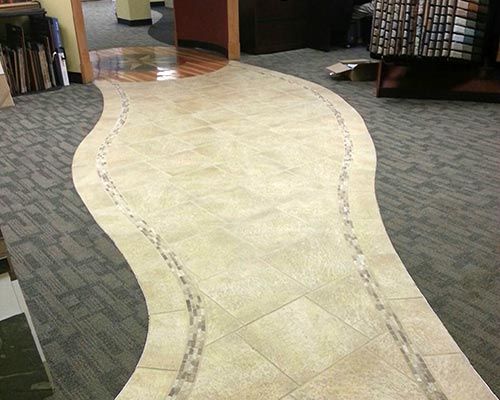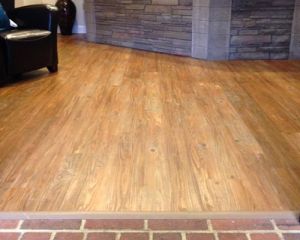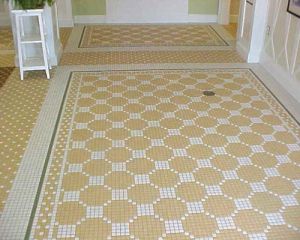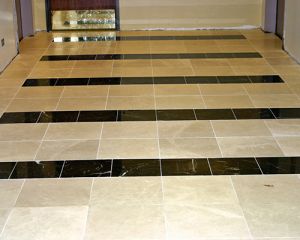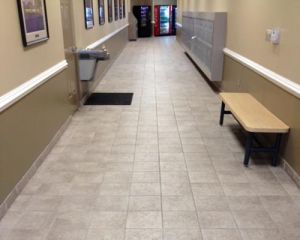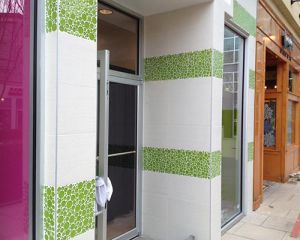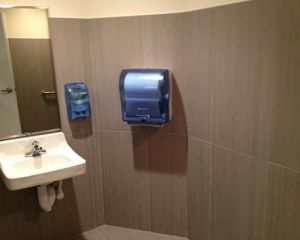Identify Specific Needs
The proper specification of a ceramic or stone floor must consider many things that will impact the finish selection as well as the methods and materials specified to install the tile. Environment, traffic conditions, intended use, chemical and food exposure, substrate construction and condition, radiant heating options, exposure to water and moisture, and temperature (normal and variances or thermal shock) will all impact your specification.
Ceramic Tile
Water Absorption – (Refer to ASTM C373, ANSI A137.1)
| Impervious < 0.5% absorption |
Vitreous 0.5% > but < 3.0% |
Semi-Vitreous 3.0% > but < 7.0% |
Non-Vitreous 7.0 > but < 20.0% |
|
| Porcelain | X | |||
| Pressed Tiles | X | X | X | |
| Mosaic | X | X | X | X |
| Quarry Tiles | X | X | X | |
| Glazed Wall Tile | X |
Abrasion Resistance – ANSI 137.1 specifies different test methods for unglazed (ASTM C1243, where tiles are quantitatively measured for material loss after exposure to an abrasive disk) and glazed (ASTM C1028 where they are qualitatively measured for noticeable changes after exposure to an abrasive disc.)
Slip Resistance (Coefficient of Friction/SCOF/DCOF) – (See ANSI A 137.1) The previous method of determining the “slipperiness” of a tile using the ASTM C1028 SCOF method has been replaced by a test that is more relevant to real world safety. The new dynamic coefficient of friction (DCOF) method tests friction related to movement over wet tile using a specially designed tribometer.
Stain and Chemical Resistance – Stain resistance is measured per ASTM C1378 and chemical resistance per ASTM C650. Tiles are classified from A (no effect) to E (four or more stains or chemicals reacted with the tile.)
Scratch Resistance – In 1812, Frederick Mohs developed a relative scale to determine the hardness of minerals by determining the ability of one to scratch another. The Mohs Scale lists ten minerals from one to ten and is relative, and not absolute or linear. The table below shows the Mohs Scale. For example, unglazed porcelain typically falls around 7, where a residential grade ceramic may be a 5.
| Mohs Scale of Relative Hardness | |
| Hardness | Mineral |
| 1 | Talc or Mica |
| 2 | Gypsum |
| 3 | Calcite |
| 4 | Fluorite |
| 5 | Apatite |
| 6 | Orthoclase |
| 7 | Quartz |
| 8 | Topaz |
| 9 | Corundum |
| 10 | Diamond |
Glass Tile
Types of glass tiles - Cast Glass, Fused Glass, and Low Temperature Coated Glass – please contact specific manufacturer for application recommendations.
Impact and Abrasion Resistance – Glass tiles are typically less resistant to impact and abrasion than ceramic.
Thermal Shock Resistance – Glass is more sensitive than ceramic to thermal shock so special attention should be paid to manufacturers advertised performance of product prior to specifying for areas that may be subject to rapid temperature changes.
Thermal Expansion – Glass expands at a greater rate than ceramic thus requiring greater accommodation for movement. It is recommended that you consult the manufacturer for specifics on the particular glass that you want to specify.
Flexibility - Glass is less flexible than ceramic, requiring a more rigid substrate.
Other Considerations – Setting and grouting materials with glass will differ based on the manufacturer’s recommendation for a particular product. Sanded grout can scratch glass during installation and should be avoided. Tiles without paper backing can show trowel marks if setting materials are not properly smoothed. White setting material is also typically used with glass. Refer to manufacturer’s specific instructions for details.
Natural Stone Tile
Natural stone is a timeless option that can fit with any aesthetic design. Natural stone’s unique characteristics can present some challenges. We recommend that you research the particular stone that you want to specify paying attention to how its chemical, abrasion, and scratch resistance as well as water absorption will perform in your application. It should also be mentioned that the variances in color, shading, and thickness can create considerable waste.

References – The Marble Institute of America publishes the “Dimension Stone Design Manual,” which is a great single source reference for all natural stone tiles with design and construction details. They also have a cleaning and maintenance publication. http://www.marble-institute.com

